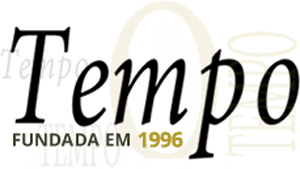Call The Materiality of Evidence Production, Circulation, and Interpretation of Early Modern Manuscripts and Prints
As we embrace the increasing digitization of archival and bibliographic collections, now easily ac- cessible on electronic platforms, it is easy to overlook that historical evidence is primarily made up of paper, parchment, and ink. This shift to digital sources risks obscuring the fact that many documents from the Early Modern Period are unique handmade artifacts. To address this over- sight, our special issue, The Materiality of Evidence, invites academic contributions that explore the social and physical materiality of Early Modern manuscripts and prints from an interdiscipli- nary perspective. We invite scholars to investigate the craftsmanship of Early Modern documents from both physical and social perspectives, emphasizing the collective processes behind their production. Contributors are encouraged to delve into the strategies that shaped the intellectual and graphical elements of texts and images created between the 15th and 18th centuries. Addi- tionally, we seek insights into how these documents were circulated and interpreted throughout history. Our special issue welcomes studies from a variety of geographical contexts and thematic focuses unified by a common methodological approach. Selected contributions should address one or more of the following themes: (1) The graphic production and editing processes of Early Modern manuscripts and prints; (2) The material characteristics of these documents, including how textual and visual information was displayed on the page; (3) Textual strategies, focusing on concepts such as authorship and authority; (4) The trajectories and circulation of Early Modern manuscripts and prints.
ARAÚJO, André de Melo. “(Re)producing the English Printed Past. Antiquarian Knowledge-Making Practices in Joseph Ames’s Typographical Antiquities (1746)”, in: Journal for the History of Knowledge, vol. 5, 2024, p. 1-25.
BOUZA, Fernando. Corre manuscrito. Una historia cultural del Siglo de Oro. Madrid: Marcial Pons, 2001.
CASTILLO GÓMEZ, Antonio. Livros e leituras na Espanha do Século de Ouro. Translation by Clau- dio Giordano. Cotia: Ateliê Editorial, 2014 [2014].
CHARTIER, Roger. The Author’s Hand and the Printer’s Mind. Malden: Polity, 2014.
DAYBELL, James/HINDS, Peter. Material Readings of Early Modern Culture. Texts and Social Prac- tices, 1580-1730. Basingstoke: Palgrave, 2010.
McKENZIE, Donald F. Bibliografía y sociología de los textos. Translation by Fernando Bouza Alva- rez. Madrid: Akal, 2005 [1686].
MONTEIRO, Rodrigo Bentes. O códice endiabrado. Da sublevação nas Minas em 1720. Niterói, Eduff, 2023.
PALOMO, Federico. “Production et circulation de savoirs dans une monarchie polycentrique: Goa, la chrétienté éthiopienne et l’empire portugais du XVIIe siècle”, in: Annales. Histoire, Sciences Sociales, vol. 77, n. 3, 2022, p. 427-461.
PETRUCCI, Armando. La descrizione del manoscritto. Storia, problemi, modelli. Roma: Carocci, 2016 [1684].

